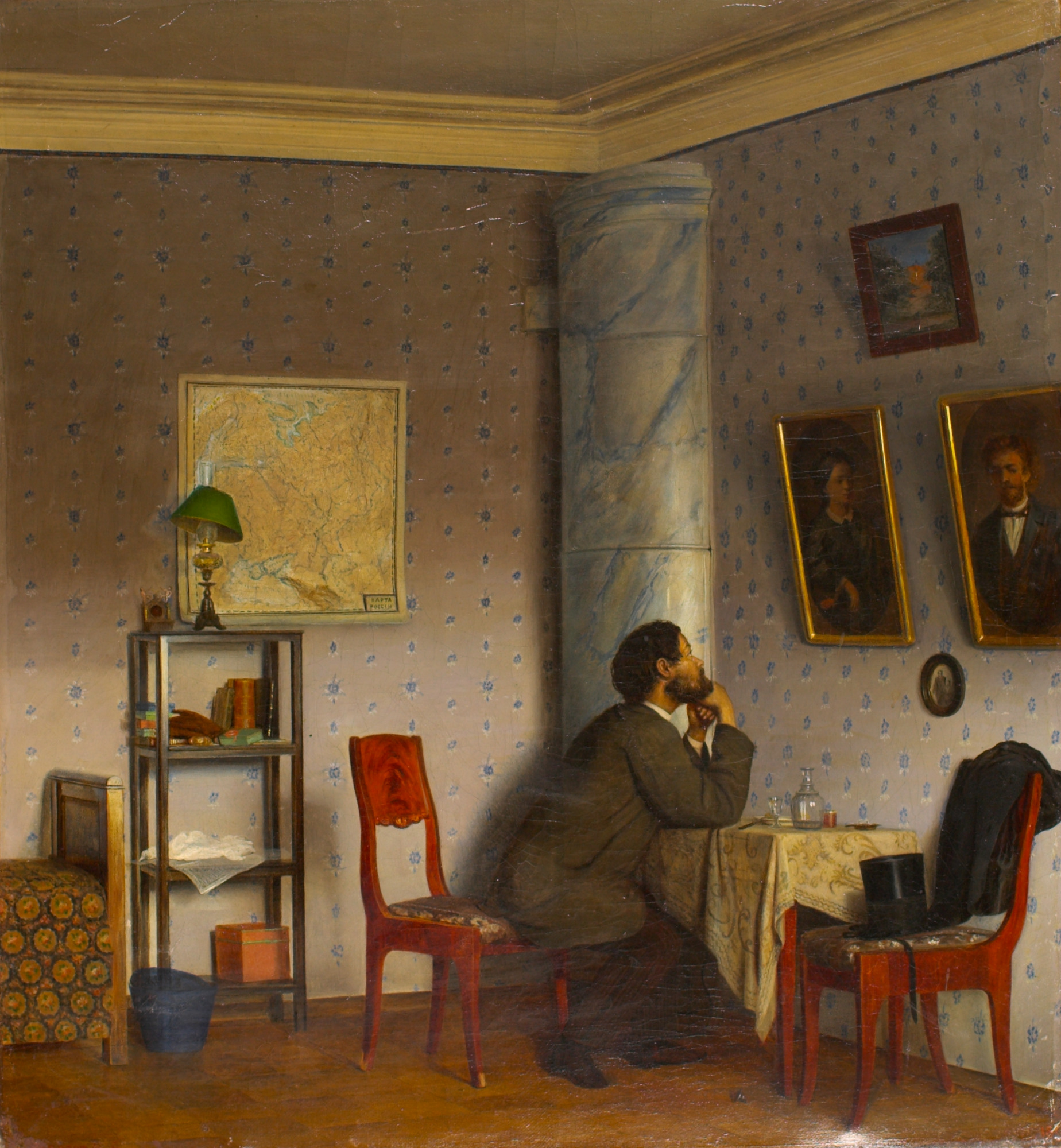Alexey Bobrov was born in 1849 in Saint Petersburg in a merchant’s family. He started drawing when he was 16 years old, under the guidance of his older brother Viktor Bobrov, a well-known printmaker. In 1866, he entered the Academy of arts as a free student, after which he received a diploma which entitled him to be a teacher in lower educational institutions. However, a few years later, Bobrov was awarded a small silver medal of the Academy for his paintings “Family scene”, “Woman smoker” and “Artist fighting the flies”.
Most often, Alexey Bobrov painted the room interiors and genre scenes that took place in these rooms. The subjects he chose for his paintings were not ceremonial, not solemn, but quite ordinary, and these simple subjects were very consistent with the small size of the paintings. In the second third of the 19th century, the genre of showing everyday routine and casual life became very popular. This genre was characterized by finely painted details and narrative plot: artists revealed the way of life and personalities of the characters in the smallest nuances.
The picture “Sorrow of a widower” at a first glance does not seem to be a particularly in-depth work. The name of the painting reveals the main subject, and the look of the main character fully corresponds to this subject: he is thoughtfully looking at the portrait of his untimely deceased wife. There are also some subtle details hidden in this picture, they reveal deeper feelings that those experienced by the owner of the house. You can see only a corner of the room — some limited space, a dead end, which represents the isolation of the widower in his sorrow. A crumpled tablecloth, a lop-sided lampshade, things carelessly thrown on a chair show that an empty house without a mistress is gradually becoming abandoned and deprived of care. And the pose of the main character is a speaking proof of his inner state: he is sitting on the smaller part of the chair, so deeply lost in his sad memories that he doesn’t even notice the obvious inconvenience. The chairs and paired portraits on the wall are bright spots in this painting — these are furniture items designed for the two. Using these numerous details, Alexey Bobrov follows the best traditions of genre painting, and expresses the deep emotions his character is experiencing.
Most often, Alexey Bobrov painted the room interiors and genre scenes that took place in these rooms. The subjects he chose for his paintings were not ceremonial, not solemn, but quite ordinary, and these simple subjects were very consistent with the small size of the paintings. In the second third of the 19th century, the genre of showing everyday routine and casual life became very popular. This genre was characterized by finely painted details and narrative plot: artists revealed the way of life and personalities of the characters in the smallest nuances.
The picture “Sorrow of a widower” at a first glance does not seem to be a particularly in-depth work. The name of the painting reveals the main subject, and the look of the main character fully corresponds to this subject: he is thoughtfully looking at the portrait of his untimely deceased wife. There are also some subtle details hidden in this picture, they reveal deeper feelings that those experienced by the owner of the house. You can see only a corner of the room — some limited space, a dead end, which represents the isolation of the widower in his sorrow. A crumpled tablecloth, a lop-sided lampshade, things carelessly thrown on a chair show that an empty house without a mistress is gradually becoming abandoned and deprived of care. And the pose of the main character is a speaking proof of his inner state: he is sitting on the smaller part of the chair, so deeply lost in his sad memories that he doesn’t even notice the obvious inconvenience. The chairs and paired portraits on the wall are bright spots in this painting — these are furniture items designed for the two. Using these numerous details, Alexey Bobrov follows the best traditions of genre painting, and expresses the deep emotions his character is experiencing.




